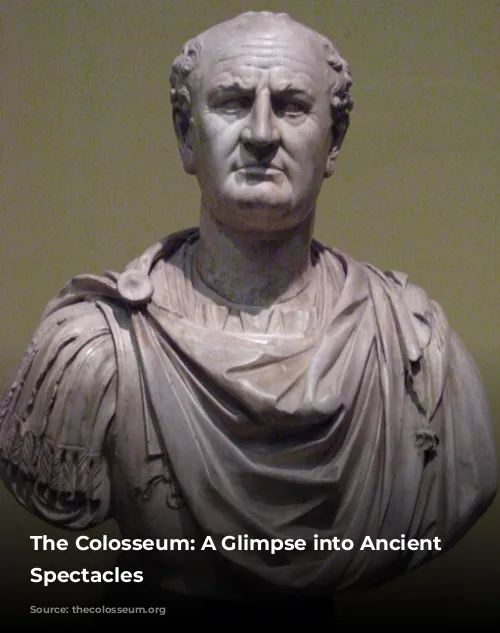The Colosseum, a towering testament to the grandeur of the Roman Empire, stands as a silent witness to a vibrant past. This colossal arena, with its nearly 2,000 years of history, has echoed with the roars of crowds, the clash of swords, and the desperate cries of both men and beasts. It was a stage for spectacles of unmatched brutality, where gladiators battled for glory, wild animals were hunted for entertainment, and the fate of prisoners and criminals hung in the balance.
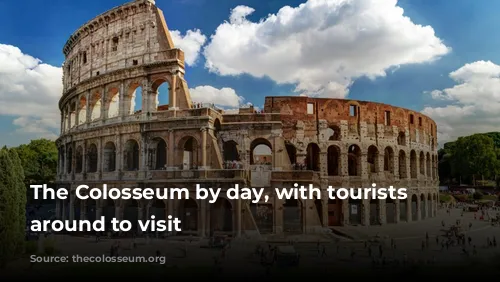
Construction and Labor: A Monument Built by Slaves
The Colosseum’s construction began in 72 AD under Emperor Vespasian, a project that spanned a mere eight years, finishing in 80 AD. Though Vespasian initiated the building, he died before its completion, leaving his sons, Titus and Domitian, to oversee the project’s final stages.
The construction of this awe-inspiring edifice, however, was a cruel reminder of the Roman Empire’s brutal realities. Thousands of Jewish slaves, captured during the Jewish-Roman wars, were forced into labor, their lives spent building the Colosseum under the watchful eyes of Roman engineers and artisans. It is estimated that between 60,000 and 100,000 slaves toiled relentlessly, their sweat and blood embedded in the very fabric of the structure.
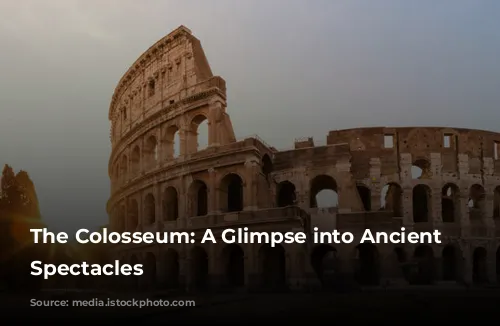
A Colosseum Built on the Ruins of Nero’s Palace
The decision to build the Colosseum wasn’t merely a whim of the emperors. The city of Rome was still reeling from the devastating Great Fire of 64 AD, which had consumed a vast swathe of the city. Emperor Nero, in a controversial act, had seized the opportunity to construct a luxurious palace for himself, the Domus Aurea, on the charred land. However, the Roman citizens were outraged by this extravagant display of power, fueling discontent against Nero.
When Vespasian rose to power, he sought to appease the Roman people. He ordered the destruction of Nero’s palace and, in its place, the construction of the Colosseum. This grand amphitheater would become a symbol of unity and a venue for entertainment, accessible to all citizens.
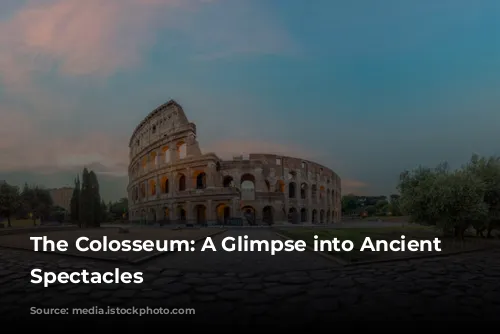
The Colosseum’s Name: A Legacy of Power and Symbolism
The Colosseum, initially known as the Flavian Amphitheater, was named after the Flavian dynasty, the emperors responsible for its construction. The name “Colosseum” likely stems from the colossal bronze statue of Emperor Nero, which once stood near the building. This statue was modeled after the Colossus of Rhodes, a towering bronze figure that once stood in the port of Rhodes.
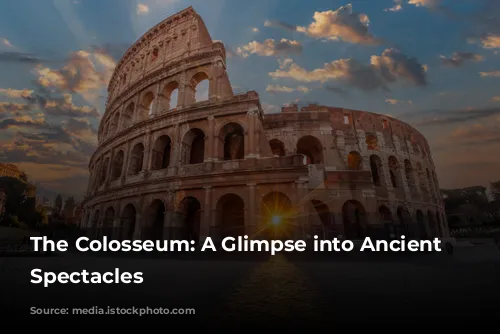
An Architectural Marvel: Scale and Structure
The Colosseum, shaped like an oval, is a testament to Roman architectural prowess. It stretches 189 meters long, 156 meters wide, and 48.5 meters tall, encompassing an area of 6 acres. The building’s exterior is adorned with three levels of Doric, Ionic, and Corinthian columns, each level featuring 80 arches. The arches, many still bearing Roman numerals, served as guides for spectators, ensuring they could easily find their seats.
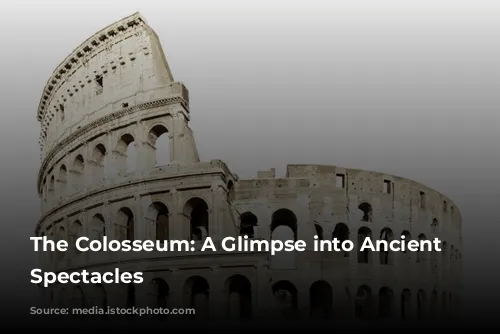
Beneath the Arena: The Secrets of the Hypogeum
The Colosseum’s Hypogeum, meaning “underground,” is a complex labyrinth of tunnels and chambers. This hidden network housed the gladiators, animals, and prisoners before their entrance into the arena. Eighty vertical shafts connected the hypogeum to the arena, allowing for the swift deployment of performers. An intricate system of trap doors facilitated the dramatic entrances and exits of scenery elements, adding spectacle to the events.
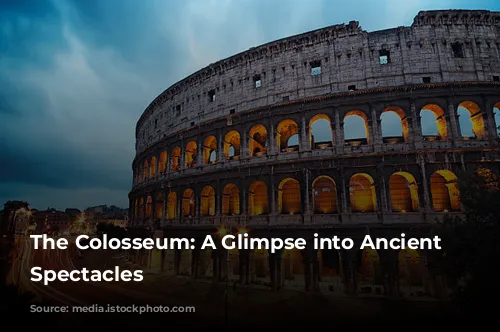
A Sea of Faces: The Colosseum’s Capacity
The Colosseum’s grand scale could accommodate an astounding number of spectators. With seating capacity ranging from 50,000 to 80,000, it was a testament to the vastness of Roman society and the emperors’ ability to assemble vast throngs for their spectacles.
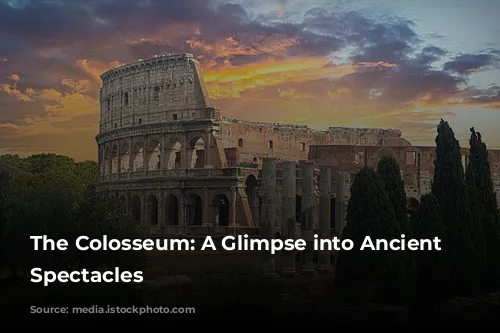
A Sea of Blood: The Colosseum’s Toll
The Colosseum stands as a chilling reminder of the brutality of ancient Roman entertainment. It is estimated that over 400,000 individuals, including gladiators, slaves, convicts, prisoners, and various other performers, met their demise within its walls. The Colosseum, over its 350 years of operation, was a stage for relentless violence, leaving an indelible mark on history.
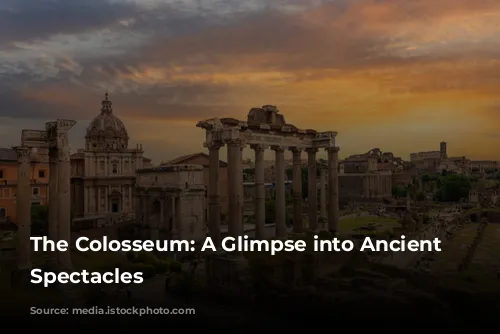
A Menagerie of Beasts: From Lions to Elephants
The Colosseum was home to an array of exotic animals, brought from distant corners of the empire. Lions, tigers, wolves, bears, leopards, wild boar, elephants, hyenas, buffalo, hippopotamuses, crocodiles, and giraffes all graced the arena, their presence adding to the thrill and spectacle. Some were used in staged hunts, where armed and trained men would battle them, while others were employed as instruments of death in the damnatio ad bestias, a form of execution where condemned individuals faced the fury of wild beasts.
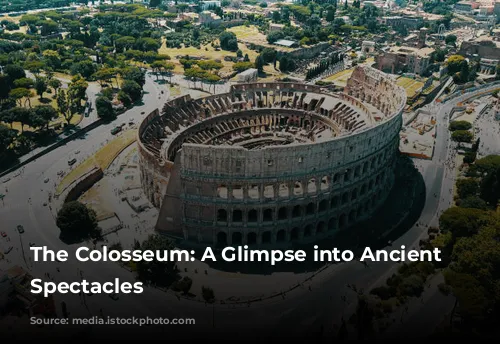
The Spectacle of Death: Gladiator Fights and More
The most prominent spectacle in the Colosseum, of course, were the gladiator fights. These bouts, however, were not simply brutal free-for-alls. Gladiators were categorized based on their size and fighting styles, with referees and doctors overseeing the matches. Victory wasn’t always death; some gladiators had illustrious careers, surviving many battles.
But the Colosseum wasn’t solely a stage for gladiatorial combat. Hunts, executions, and even naumachia (staged naval battles) were held within its walls. The Colosseum was a versatile arena, designed to satisfy the diverse appetites of the Roman populace.
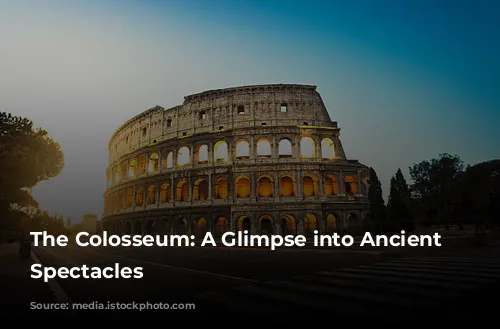
Were Christians Really Martyred in the Colosseum?
Although the Colosseum was a place of unimaginable suffering, there is no definitive historical evidence to support the common claim that Christians were systematically martyred within its walls. While many individuals perished in the Colosseum, including undoubtedly some Christians, the connection between Christian martyrdom and the Colosseum remains largely a matter of historical speculation.
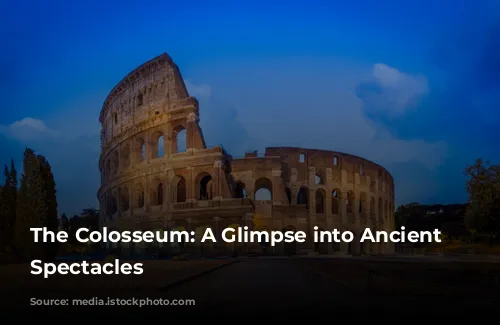
The Colosseum in Cinema: Fact and Fiction
The movie Gladiator, while capturing the raw energy and violence of the Colosseum, takes liberties with historical accuracy. Commodus, the Roman emperor portrayed in the film, was indeed a lover of gladiatorial combat and bloodsports. However, the movie’s depiction of his death in the arena against a heroic gladiator is a fictionalized account. While Commodus was known for his cruelty, he often fought against handicapped or non-threatening opponents, leading to his unpopularity among Roman citizens.
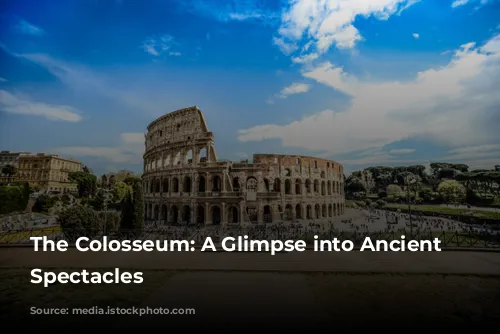
Gladiators: Slaves of the State
Gladiators, despite their fame and skill, were not free men. They were members of the infame class, stripped of their rights and reduced to the property of their owners. Their lives were forfeit, their fate determined by the whims of their masters.
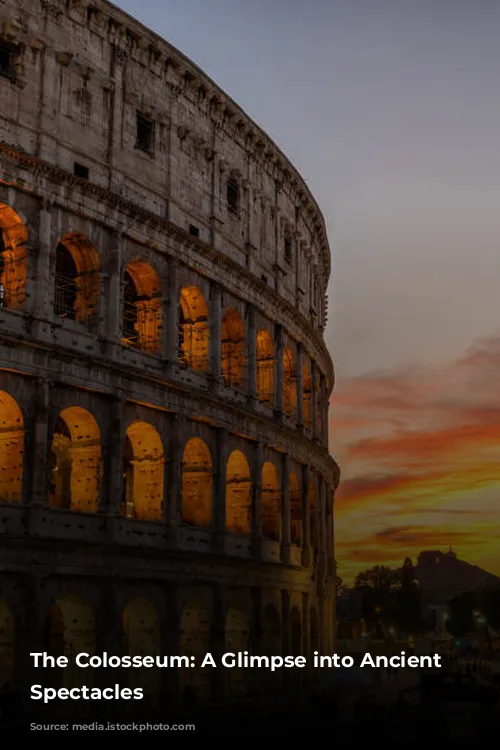
The Colosseum’s Last Fights: A Fade to Silence
The last documented gladiatorial battles in the Colosseum date back to the year 435 AD. While the gladiatorial contests ceased, the Colosseum continued to host hunts for another century. However, the Colosseum’s glory days were over.
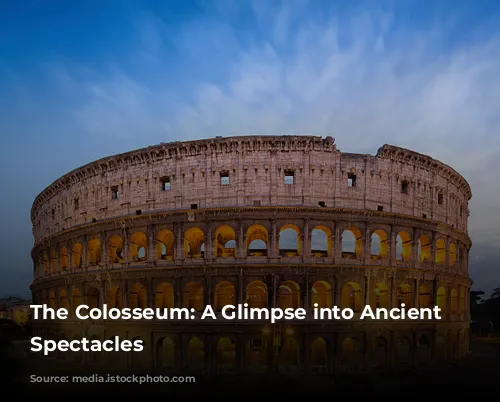
The Fall of the Colosseum: Decline and Abandonment
The demise of gladiatorial combat in the Colosseum wasn’t due to the spread of Christianity, as is often assumed. Instead, it was the decline of the Roman Empire itself. The Colosseum, by the 5th century, was in a state of disrepair, its once vibrant facade weathered and crumbling. The empire’s dwindling resources could no longer sustain the costly spectacles that had once enthralled the Roman masses.
A Resilient Structure: Catastrophes and Transformations
Throughout its history, the Colosseum has endured various calamities. At least three major fires and four earthquakes have ravaged the building, leaving their scars on its ancient stones. However, the Colosseum has proven its resilience, repeatedly rebuilt and repaired over the centuries.
The Colosseum’s Many Lives: From Arena to Tourist Attraction
The Colosseum, after its days of glory, transitioned into a diverse array of functions. It served as a cemetery, a place of worship, a residence for artisans, a fortress, and eventually, a tourist attraction, forever drawing crowds to its grandeur.
A Lasting Legacy: The Colosseum Today
The Colosseum, standing as a symbol of Roman power and resilience, attracts over 7 million visitors annually. This iconic landmark, a testament to a tumultuous past, continues to inspire awe and wonder in visitors from all corners of the world. The Colosseum’s stories, both grand and grim, continue to resonate across time, reminding us of the enduring power of both human ingenuity and human cruelty.
